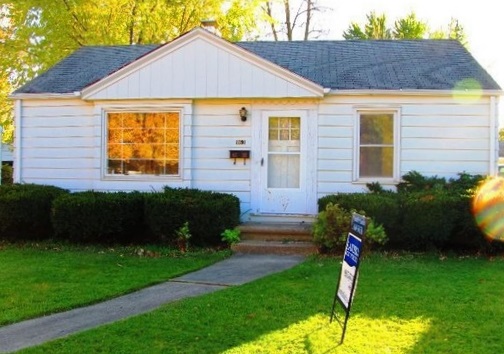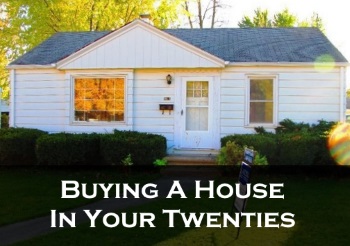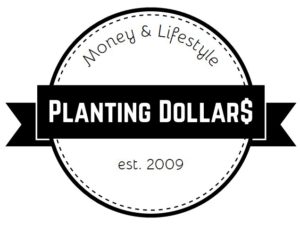Calculating real estate values can be as simple as 1, 2, 3!
There are three ways appraisers go about determining the fair market value of income producing property. These three approaches are:
- Income Approach
- Market Data / Comparable Sales Approach
- Cost / Replacement Value Approach
Each of the models is unique and take a completely different viewpoint. You’ll notice that I also used two names for two of the approaches above. These are interchangeable and I’ve simply added them because depending who you talk to they may call it one of the two. Now you’re ahead of the curve and know both!
Of the three approaches above the only one used to value homes in the market is the second one – Market Data Approach / Comparable Sales. The income approach is most commonly used for income producing property and the cost approach is popular for insuring your property.
Income Approach
This approach for determining the value of a property’s fair market value uses the rate of return (also referred to as a Capitalization or Cap Rate) you desire, the net operating income of the property, and the actual property price. If you have two of the previously mentioned variables you’ll be able to calculate the third.
Net Operating Income / Desire Capitalization Rate (rate of return) = Property Value
Pretend for a moment that you desire a 10 percent return on your investment dollar and you estimate the net operating income (NOI) for this particular property to be $40,000. Here’s the computation:
$40,000 / .10 = $400,000
You would be willing to pay $400,000 for the property based upon its income stream and your desired return on return.
In the most basic of terms real estate is valued by the income it produces. Without income the property would be worth zero based on this approach.
Market Data / Comparable Sales Approach
This is the approach used when selling your home, and it is done to often see what other income producing properties of similar style are going for. In order to effectively utilize this approach you’ll need to compile a list of properties comparable to the subject property and determines a property value-price per unit (in the case of a home there is only one unit). To have an effective comparable sales approach you’ll need properties that are similar in geographic area, similar square footage (per unit), amenities, appearance, and rent structure. They should also be properties that have sold recently. Especially if the real estate market has been fluctuating significantly in the past few years.
If you have several apartment complexes that you’re comparing of different total units, you would then divide the prices at which each building sold by the number of units in each apartment complex to determine an average price per apartment to use as a multiplier. The average price per unit is then applied to the subject income property.
For example, ifyou create a list of six comparable apartment complexes in the local area and determined that they sold for an average of $60,000 per apartment. By multiplying the $60,000 average unit price times the number of units in the subject property (we’ll assume there are six), you arrive at market value of $360,000 based on the market value approach.
If you were doing this for your home, you wouldn’t have to divide by units because your house is only one unit.
Cost / Replacement Value Approach
The cost approach method estimates what it would cost to replace the entire property. Basically, what would it cost to buy the land and build a building identical to the property?
First, you must determine the land value. If a study indicates comparable land is selling for $10 a square foot and the subject property is on a 100 x 200 foot lot or 20,000 square feet, then the land is worth $200,000.
Second, you must determine what it would cost to replace the site improvements such as the parking area, lawn, shrubs, trees, etc. You determine it would cost about $30,000 to replace them.
Finally, you must compute what it would cost to duplicate the building. If the subject apartment building has six one-bedroom apartments of 600 square feet each or a total of 3,600 square feet, and it would cost $60.00 a square foot to build, then the cost of a replacement structure will be $216,000.
The total cost of a new building is $200,000 + $30,000 + $216,000 or $446,000.
But what if the property we’re looking at is several years old? We would then need to depreciate the value of the property accordingly.
In this case, assume the subject income property has depreciated 20 percent or $43,200. This would leave a depreciated value for the building of $172,800. To this amount, add the $30,000 in site improvements and the $200,000 land value, giving a total market value using the cost approach of $402,800.
**Remember that land and improvements do not depreciate.
Our Estimate of Market Value
1. Income Approach:
NOI of $40,000 capitalized @ 10% = $ 400,000
2. Market Data Approach:
6 Units @ $60,000 per unit = $ 360,000
3. Cost Approach:
Land of 20,000 square feet @ $10.00 square foot = $200,000
Site Improvements = $30,000
Duplicated Building (less 20% depreciated value) = $172,800
Cost to replace property = $402,800
4. Final Estimate of Market Value = $387,600
To get the final estimate of market value I simply averaged the three approaches values to determine estimate the value of the property. Typically for investment property the income approach is most heavily weighed as investors simply want to achieve their rate of return. Likewise, for your home the comparable sales / market approach is most heavily used.t
So there you have it – the three approaches to real estate valuation. Next time someone asks you at a cocktail party, “How is real estate valued,” you’ll have a great answer for them!
Image from Vicfan
Special thanks to Rick of Lok-Safe storage a Green Bay Self Storage Units provider who shared with me how he valued his properties.











[…] rate of the subject property, how do we know if it’s a good rate of return? Much like the comparable sales approach to valuing property you can go ahead and look at what other similar properties have sold for and what their cap rates […]
[…] “How is Real Estate Valued?,” Planting Dollar$, January 22, 2010. The age-old question of how much is my house worth? Ryan gives the three traditional methods. Great basic information post. My suggestion would have been to use this as a mini-series — a post featuring each of the styles to keep the reader’s mind a little cleaner. […]